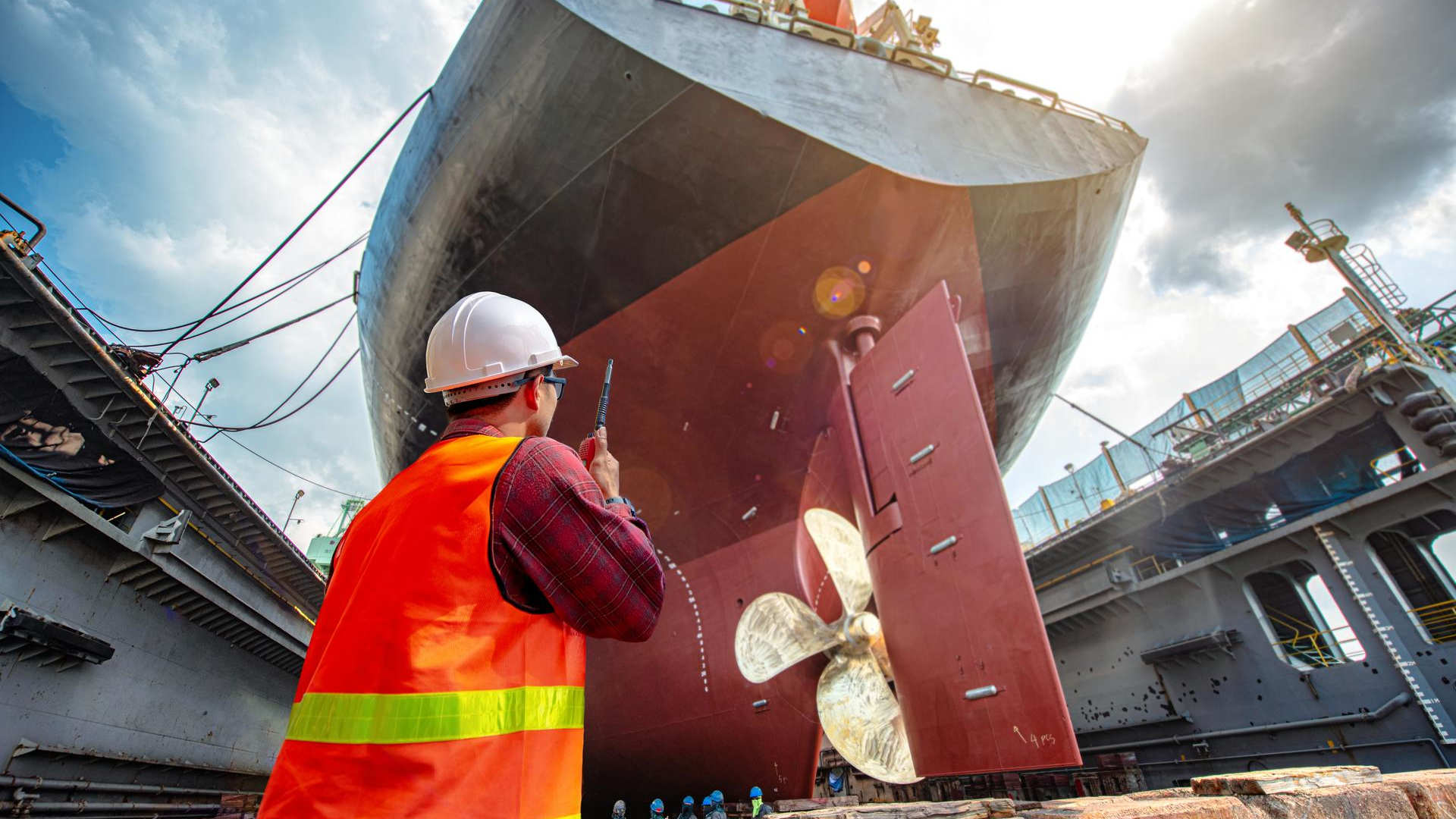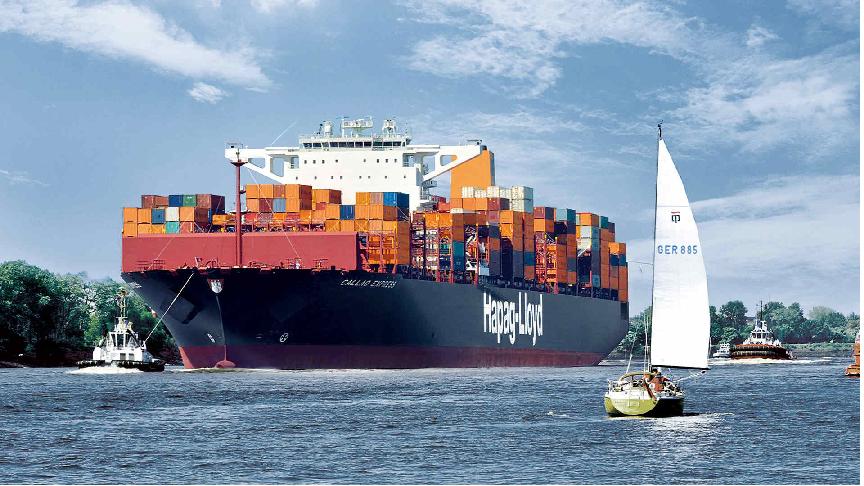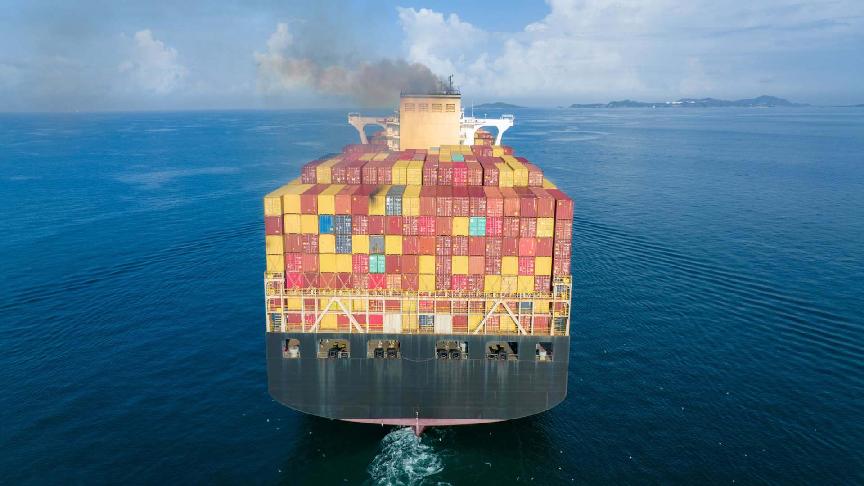4 October 2023 (Lloyd's List) - LINER operators are looking for ways to make mid-life ships more efficient as they prepare for upcoming emissions regulations.
Some upgrades already made or announced have been radical, including converting large containerships from conventional fuels to alternative fuels. But there remain a number of tried-and-tested measures, which more operators are now adopting.
One increasingly popular measure is increasing the capacity of containerships by raising the height of their accommodation deckhouses and on-deck lashing bridges.
Such vessel surgery began to be undertaken by operators such as CMA CGM, Evergreen and Maersk on relatively new, mid-size vessels around 10 years ago, mostly in an effort to reduce slot costs.
Increasing the height of containership deckhouses and lashing bridges enables the loading of up to three additional tiers of on-deck containers and can increase capacity by more than 10%, reducing carbon emissions per transported box in the process.
DNV Maritime business development EVP Jan-Olaf Probst told Lloyd’s List there are two main reasons why more boxship operators are showing interest in such capacity upgrades.
“Firstly, if an operator wants a larger vessel, say to upgrade capacity on a particular service, then a newbuilding will not be received for at least four years. Upgrading the capacity of a containership could be done in a matter of weeks,” he said.
“Secondly, in the last 10 years we had one game-changer in container on-deck lashing bar systems which was from an ‘internal’ system to ‘external’.
External lashing provides a huge benefit versus the older system in terms of weight distribution inside a container stack — this means you can have a higher load in the top tiers of containers — this provides much better loading flexibility.”
Probst said that increasing both the height of the deckhouse and lashing bridges, together with upgrading the lashing system to the newer internal type is relatively inexpensive but requires considerable planning and is best done on a series of identical ships.
German liner operator Hapag-Lloyd is doing this on a series of seven 8,000 teu boxships built around a decade ago.
Alphaliner recently reported that work on the first ship to undergo the upgrade, the 2012-built Tucapel (IMO: 9569970), began in September at Danish ship repair yard Fayard (see above) during its routine special survey drydocking. The entire operation, which will increase capacity of the vessel to around 9,000 teu, is expected to be completed within six weeks.
This capacity upgrade includes cutting the vessels’ deckhouse two decks below the navigation bridge and inserting a prefabricated section to raise the height of the bridge by around 5.5m.
The increase in bridge height is required to ensure compliance with navigation line of sight requirements for the loading, in this case, of two more tiers of containers throughout most of the vessel’s deck stow.
Deck lashing bridges will also be increased in height to support the increase in container deck stowage height while the majority of the existing lashing systems will be converted to the latest external type.
In addition to the capacity upgrade, Tucapel and its sisters will be fitted with new, more energy-efficient propeller systems, which are claimed to provide fuel savings in excess of 5%.
Measured on a per-teu carried basis, the increase in capacity and the propeller upgrade could cut fuel consumption by at least 15% provided the ships are fully loaded.
Hapag-Lloyd said it aims to modify more than 150 ships by the end of 2027 in a fleet upgrade programme. Chief executive Rolf Habben Jansen has said the company is putting $360m into increasing its capacity by up to 100,000 teu. This suggests most of the fleet, not just Tucapel and its six sisters, will get the treatment.
“We are strategically upgrading our assets to ensure that the individual ship systems are brought up to current technical state-of-the-art,” a spokesperson told Lloyd’s List.
DNV’s Probst said other efficiency gains can be had by increasing draught and strengthening hatch covers to maximise a ship’s loading ability. Such measures most benefit ships that regularly load a high proportion of heavy containers.
“More fuel savings can be provided by the fitment of a Mewis duct while a vessel’s bulbous bow can be changed to optimise a ship for lower speeds. Propeller retrofit can also be beneficial,” he said.
According to manufacturer Becker Marine Systems, a Mewis Duct straightens and accelerates a vessel’s hull wake in to its propeller and produces forward thrust. Internal fins provide a “pre-swirl to the ship wake” which reduces losses in the propeller slipstream. This results in an increase in propeller thrust at a given propulsive power.
Becker claims that power savings from a Mewis Duct range from 3% to 8% depending on the design of the vessel it is fitted to.
Probst said that a new propeller with one less blade than the original can improve the energy efficiency existing ship index rating for a mid-life ship, which will typically sail slower than it was originally designed to.
The upgrading of containerships is already providing lucrative work for repair yards. While Chinese shipyards are dominating, yards in the Middle East, Portugal and Spain are also involved in boxship upgrades and more recently, as in the case of the Hapag-Lloyd vessels, Denmark’s Fayard.
While the total number of ships expected to be upgraded across the containership fleet is unclear, Probst suggested it could be in “three figures.”
From a regulatory perspective, the upgrading of containerships is expected to be particularly beneficial in increasing the spread of costs associated with the EU’s Emissions Trading Scheme which begins to enter force in January 2024.
“The ETS regime will be based on how much emissions you generate, so better utilisation of a vessel’s capacity will provide a benefit in reducing CO2 per transported unit. The additional containers you can load will in effect contribute to CO2 reduction.”







